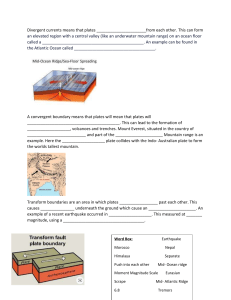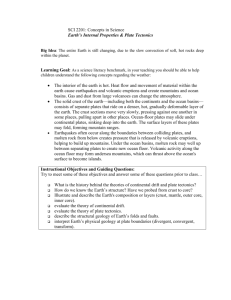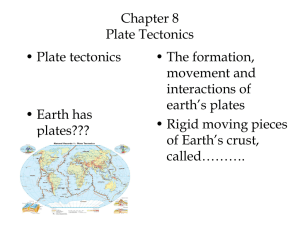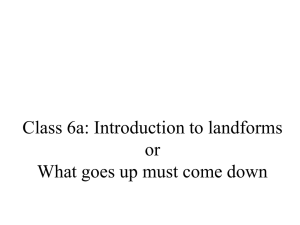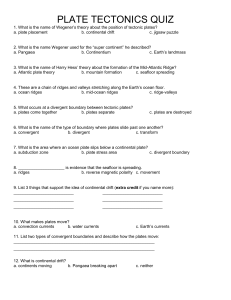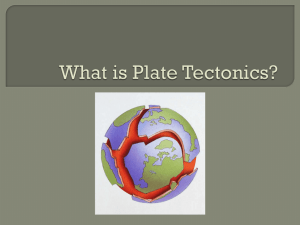the sea floor - Jocha
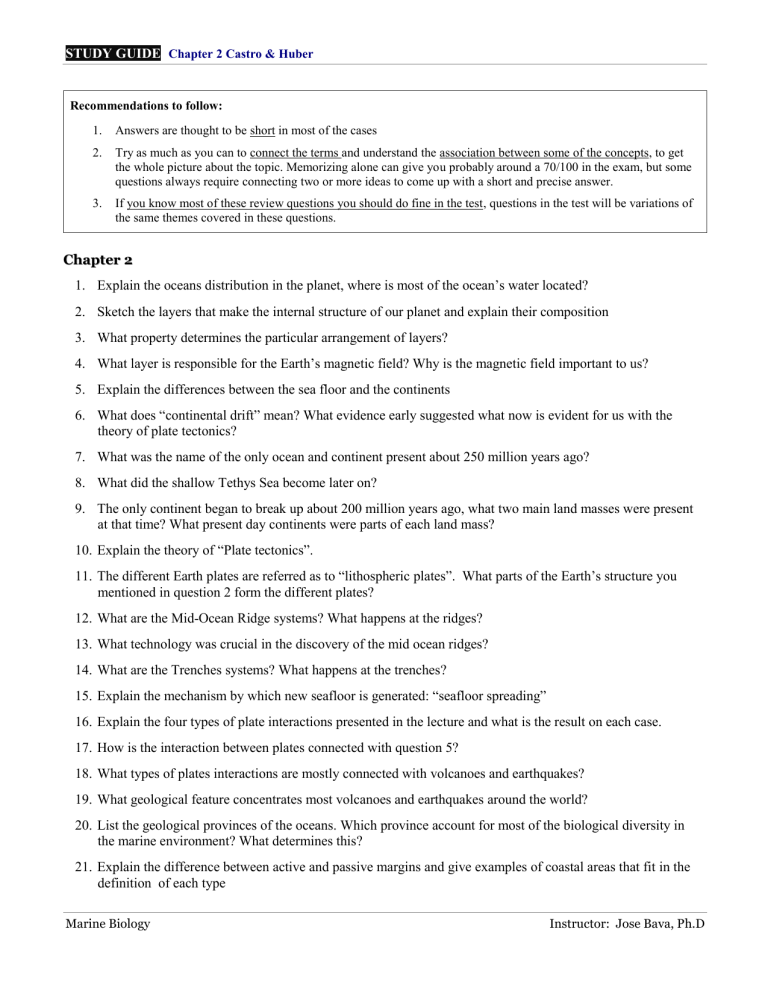
STUDY GUIDE Chapter 2 Castro & Huber
Recommendations to follow:
1.
Answers are thought to be short in most of the cases
2.
Try as much as you can to connect the terms and understand the association between some of the concepts, to get the whole picture about the topic. Memorizing alone can give you probably around a 70/100 in the exam, but some questions always require connecting two or more ideas to come up with a short and precise answer.
3.
If you know most of these review questions you should do fine in the test, questions in the test will be variations of the same themes covered in these questions.
C h a p t e r 2
1.
Explain the oceans distribution in the planet, where is most of the ocean’s water located?
2.
Sketch the layers that make the internal structure of our planet and explain their composition
3.
What property determines the particular arrangement of layers?
4.
What layer is responsible for the Earth’s magnetic field? Why is the magnetic field important to us?
5.
Explain the differences between the sea floor and the continents
6.
What does “continental drift” mean? What evidence early suggested what now is evident for us with the theory of plate tectonics?
7.
What was the name of the only ocean and continent present about 250 million years ago?
8.
What did the shallow Tethys Sea become later on?
9.
The only continent began to break up about 200 million years ago, what two main land masses were present at that time? What present day continents were parts of each land mass?
10.
Explain the theory of “Plate tectonics”.
11.
The different Earth plates are referred as to “lithospheric plates”. What parts of the Earth’s structure you mentioned in question 2 form the different plates?
12.
What are the Mid-Ocean Ridge systems? What happens at the ridges?
13.
What technology was crucial in the discovery of the mid ocean ridges?
14.
What are the Trenches systems? What happens at the trenches?
15.
Explain the mechanism by which new seafloor is generated: “seafloor spreading”
16.
Explain the four types of plate interactions presented in the lecture and what is the result on each case.
17.
How is the interaction between plates connected with question 5?
18.
What types of plates interactions are mostly connected with volcanoes and earthquakes?
19.
What geological feature concentrates most volcanoes and earthquakes around the world?
20.
List the geological provinces of the oceans. Which province account for most of the biological diversity in the marine environment? What determines this?
21.
Explain the difference between active and passive margins and give examples of coastal areas that fit in the definition of each type
Marine Biology Instructor: Jose Bava, Ph.D




